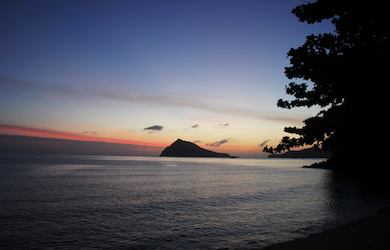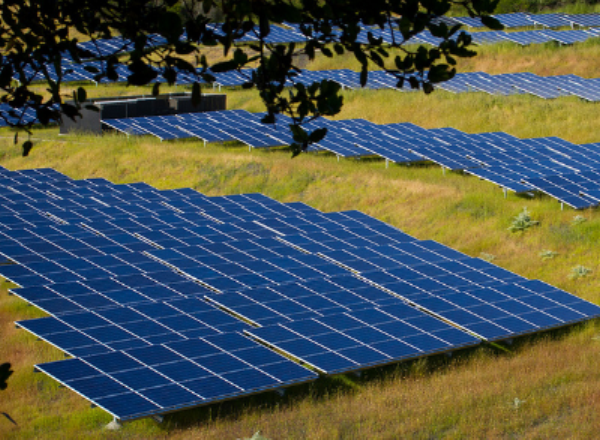In a recent article, we explored the process and complexities of implementing screening mitigation for solar photovoltaics due to glint and glare impacts. Though implementing screening is the most common and suitable solution for ground-mounted solar schemes and/or ground-based observers, there are sometimes circumstances that mean screening is not able to sufficiently reduce the impact.
In this article we outline the technical mitigation options for solar photovoltaics and the process to finding a successful solution.
Technical Mitigation Solutions
The following technical mitigation solutions may be utilised to remove significant impacts:
Altering the Azimuth Angle
For a specular reflection from a flat surface, the angle of incidence is equal to the angle of reflection. This means that the azimuth angle can be altered in order to affect the path of the reflected light, moving the reflection away from particular receptors. This solution may also change the panels from which reflections are possible, which could be significant if the reflecting panels are now in a less sensitive location e.g., outside the pilot’s / road user’s main field of view.
Altering the Elevation Angle (Tilt)
Changing the vertical elevation angle of the solar panel can affect the path of the reflected light towards the receptor. This could change the time of day in which a solar reflection is predicted and therefore reduce its significance. In some instances a change in elevation angle can reduce the reflective footprint, particularly if the observer is in close proximity to the development.
This solution may also reduce the intensity of the reflection if moved into the early or late hours of the day as direct sunlight reduces in intensity during these times.
Implementing an Anti-Reflective Coating [Aviation Only]
Glass with no coating is the worst-case scenario with respect to glint and glare as it will produce glare with the highest intensity. If an anti-reflective coating is used, this can reduce the significance of the solar reflection by reducing the intensity of the reflected light from the solar panels.
This solution is only feasible when the intensity of the reflection is marginally significant as anti-reflective coatings increase the level of scattering and are not guaranteed to sufficiently reduce the glare to acceptable intensities. If the intensity is not marginally significant, an anti-reflective coating is likely to exacerbate the impacts.
Panel Footprint Reduction [Aviation Only]
As the intensity of a reflection is correlated to the size of reflecting surface, a large solar panel area will produce reflections of higher intensity, and therefore more significant impacts, than smaller solar panel areas. It is therefore possible that reducing or breaking up the solar panel area will reduce the intensity of the reflections to acceptable levels.
Addressing Specific Areas
It is important to consider that significant impacts may only be predicted due to solar reflections originating from certain regions of the solar panel area. The identified solutions may therefore be used on certain regions of the entire panel area, as appropriate, in order to remove or reduce the significant impacts.
Combination of Solutions
It is possible that all of the outlined mitigation solutions can be used in combination to sufficiently reduce or remove significant impacts towards aviation receptors. This may mean that the proposed development is split up into multiple sections with varying azimuth and elevations angles.
Technical Mitigation Solution Example
The Hale Farm and Woodtown Farm solar developments are located approximately 570 metres and 1.3 kilometres to the west of the runway 08 threshold at Bournemouth Airport, respectively. The locations of the solar developments relative to Bournemouth are shown in Figure 1 below.
 Figure 1: Solar developments relative to Bournemouth Airport.
Figure 1: Solar developments relative to Bournemouth Airport.
The results of the Pager Power assessments showed that early-stage design iterations produced glare with unacceptable intensities, in accordance with the associated guidance at the time, towards pilots approaching from the east towards the Runway 26 approach.
Through a combination of the mitigation solutions outlined previously, although solar reflections were still geometrically possible towards pilots along the approach paths, panel configurations were found that reduced the glare intensities to acceptable levels in accordance with the associated guidance.
Technical Mitigation Solution Investigation Process
When investigating the appropriate panel configurations, it is important that the developer understands the range of azimuth and elevation angles that are acceptable, from a solar yield perspective, for the development to remain financially viable.
Once the parameters have been provided, geometric calculations are undertaken for multiple angles within the defined ranges. A colour coded table is then outputted showing whether the configuration is acceptable or not – green = acceptable, red = not acceptable. A hypothetical example using azimuth angles: 160 – 200, elevation angles: 10-20, and resolution of 5° is presented in Figure 2 below.
 Figure 2: Example configuration investigation output.
Figure 2: Example configuration investigation output.
Before the configuration is confirmed, the identified panel configuration must account for the effect the changes have on the location and duration of reflections at other receptors which were previously not significantly impacted. For example, it should be ensured that the solar reflections are not simply transferred to another section of unscreened road that was previously not significantly impacted.
Finally, the developer will be able to update the layout of the development in accordance with the acceptable solution to remove the significant impacts.
Pager Power
Pager Power has developed proprietary software for evaluating all aspects of glint and glare from a solar development, including areas causing significant impacts and calculating the level of screening required to adequately mitigate these effects. If you would like advice for a project, or are interested in more information, please do not hesitate to get in touch.
Thumbnail image accreditation: Derek Sutton (April 2021) on Unsplash.com. Last accessed on 7th February 2022. Available at: https://unsplash.com/photos/rfgsYFb_5ow?utm_source=unsplash&utm_medium=referral&utm_content=creditShareLink



